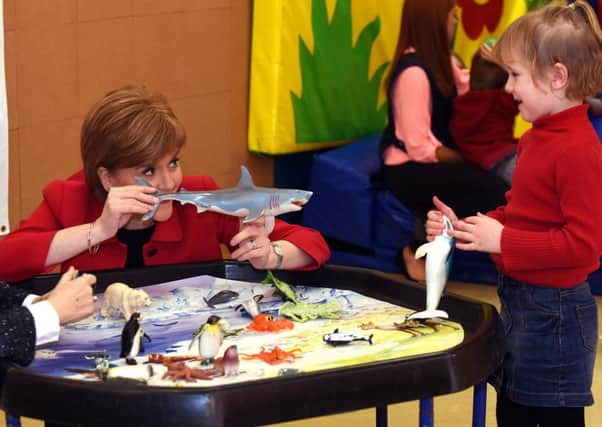Tom Peterkin: SNP rhetoric on education runs short of reality


This eye-catching pledge in her address grabbed most of the headlines at the weekend, but it was far from a one-trick speech.
Buried among a plethora of other announcements was an extra £100 million – raised by changes to council tax – to go towards helping poorer children fulfil their potential at school.
Advertisement
Hide AdAdvertisement
Hide AdAnything that can help disadvantaged kids by closing the attainment gap should be welcomed, given the increasing divergence between the exam results of well-off children and those from a less fortunate background.
But to Sturgeon’s critics, there continues to be frustration. Their beef stems from the way the cash has been distributed.
This has its origins in the first announcement of a £100m fund a few years ago. Back then it was decided that the cash should be allocated to the seven most disadvantaged councils based on the Scottish Index of Multiple Deprivation (SIMD).
The problem with this approach was that 25 local authorities were automatically excluded from receiving any of the cash. So some very poor families were denied access to the funds, because there were enough relatively affluent families in their council area to push up the overall SIMD score.
This flaw appeared to have been at least partially acknowledged some time later when Sturgeon announced a further £2.5m to be divided between 57 primary schools in 14 local authority areas to help the most deprived pupils. This brought the total number of councils to benefit from the attainment fund to 21. For Labour, however, there was still a problem with this approach. It was not just that there were still 11 local authorities with no access to the cash. Labour were unsure why certain schools had been selected to be part of the 57 and others had not.
Kezia Dugdale and her education spokesman Iain Gray, a former teacher, attempted to highlight this situation on a visit to a shared school campus in Renfrewshire.
To illustrate the fact that some poor children were still missing out, they visited Cochrane Castle primary and St David’s, a Catholic primary on the same site.
Although the pupils were from the same areas, shared the same gym, dining hall and playground, only one of the schools benefited from the Attainment Fund.
Advertisement
Hide AdAdvertisement
Hide AdFurthermore, Labour’s constant complaint was that needy children were missing out because of the government’s “absurd” refusal to give the money directly to head teachers.
Labour’s argument was that extra money should be handed directly to schools for each child from a poor family, regardless of where they lived.
This point appeared to have been belatedly addressed when Sturgeon stood up to speak on Saturday.
The First Minister said the latest tranche of £100m will be shared among headteachers across Scotland, allocated according to the number of youngsters from low income families at each school.
Labour’s exasperation is that this has only happened after nine years in government. Sturgeon’s rhetoric may be all about a radical approach to education. The reality, however, is somewhat more confused.